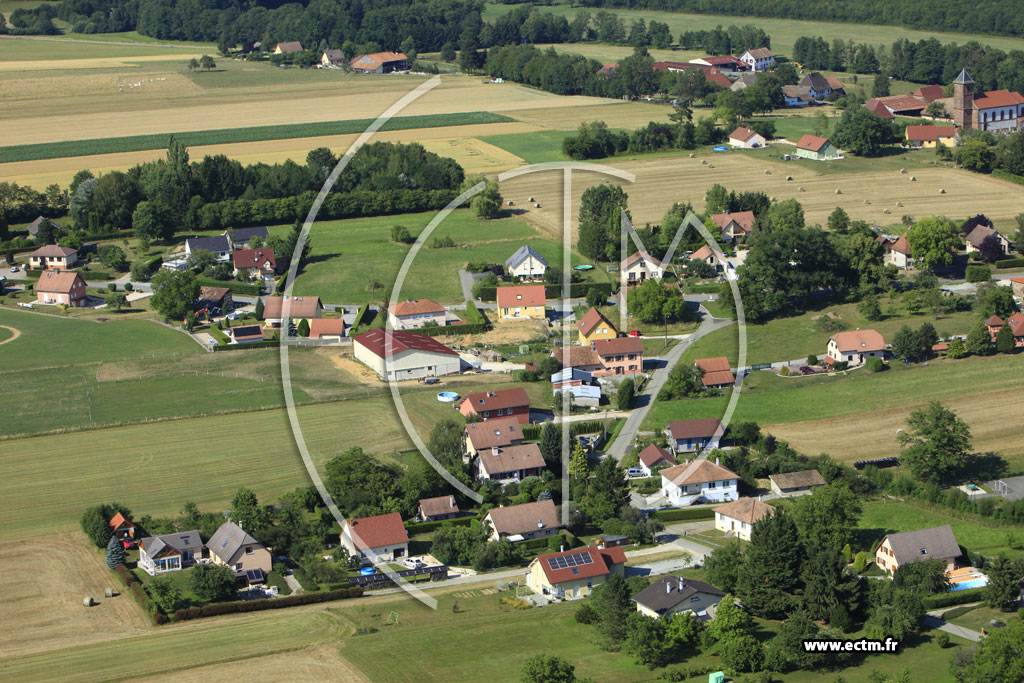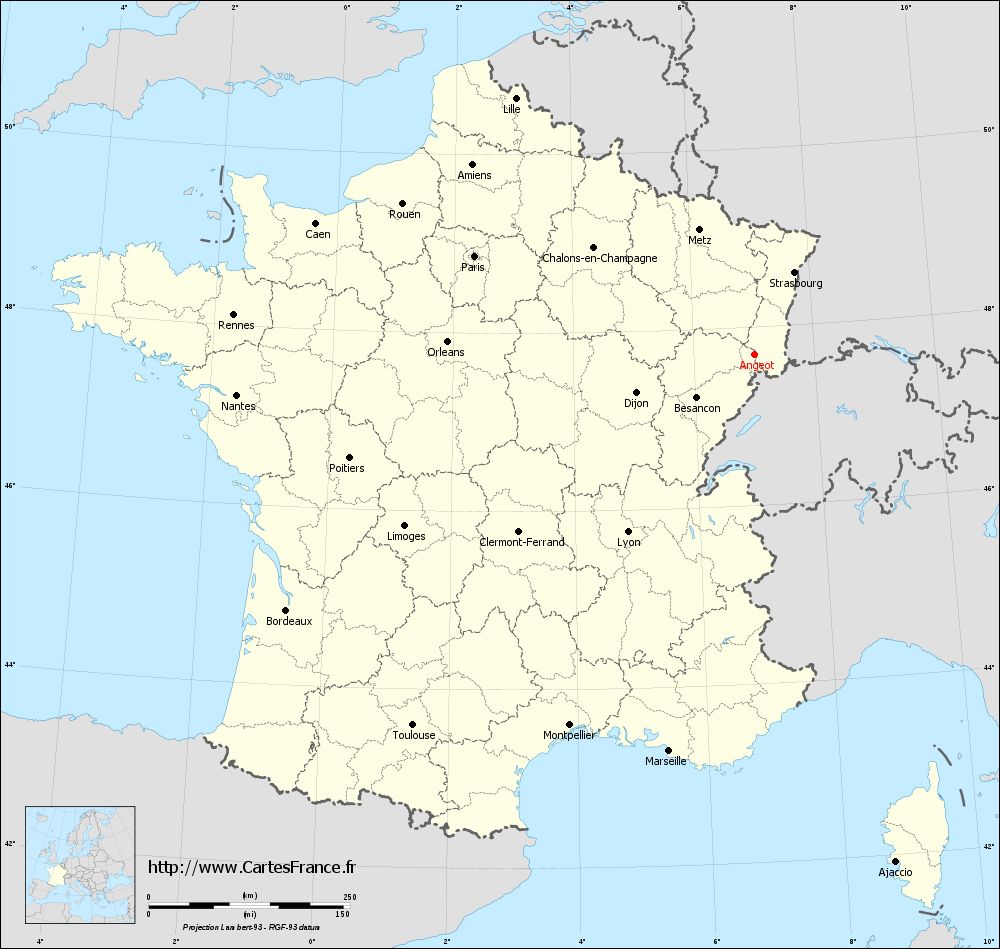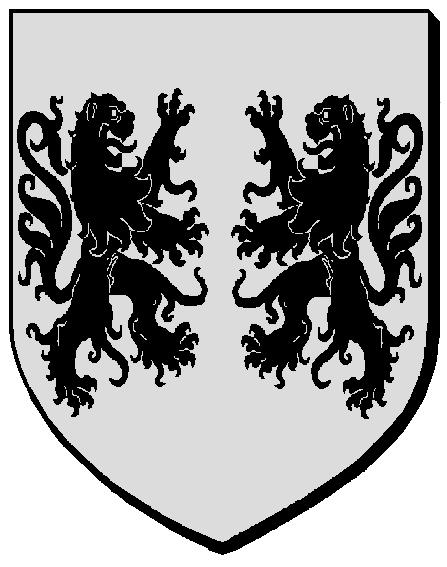Angeot
Angeot ( formerly German Engelsod or Ingelsod ) is a town in the French department of Territoire de Belfort in the Franche -Comté.
Geography
Angeot is located on 367 m, about 13 kilometers northeast of the town of Belfort ( a straight line ). The village is located in the northern part of the Burgundian Gate, on the plateau near the Vosges mountains, on the western edge of the wide valley of the Ruisseau de Saint -Nicolas.
The area of 6.56 km ² municipal area includes a portion of the weakly in relief landscape in the Burgundian Gate ( trouée de Belfort ). The central part of the area is traversed in a north-south direction from the valley of the Ruisseau de Saint- Nicolas, which has a width of nearly one kilometer. The creek drains the area of the Bourbeuse to Allaine. The level in the foothills of the Vosges is on average 380 m. It is mostly covered with arable and meadow land, but also shows some forest areas. In the west, the municipality's area extends over the plateau, which is divided by two parallel side streams ( including the Margrabant ) of Ruisseau de Saint- Nicolas, to the hill of Bethonvilliers. To the east the land rises slightly to the wooded plateau of Haut- Bois, on the 417 meters, the highest elevation is achieved by Angeot. This plateau forms the watershed between the basins of the Rhone ( to the west) and the Rhine (east ).
Neighboring communities of Angeot are Felon and Lachapelle- sous- Rougemont to the north, Eteimbes in the east, Vauthiermont and Larivière in the south and Lagrange and Saint- Germain- le- Châtelet in the West.
History
Is first mentioned Angeot in 1234. It already owned a church that was the center of a large parish. In the 13th century Angeot included in the County Ferrette, which gave the village as a fief to a local noble family. Middle of the 14th century came Angeot under the suzerainty of the Habsburg and was at this time the German name Ingelsott. Together with the Sundgau came the village with the 1648 Peace of Westphalia to the French crown. Was Angeot capital of a bailiwick, which consisted of two dairy farms with a total of eight municipalities. Since 1793, the village belonged to the Department of Haut -Rhin, however, remained in 1871 as part of the Territoire de Belfort as opposed to the rest of Alsace in France. Since 1997 Angeot is affiliated with 12 other municipalities for municipal association Communauté de communes du Tilleul.
Attractions
Church of Saint -Sébastien
The church was rebuilt in 1840-1843 on the site of a former manor seat, the bell tower was rebuilt in 1862. In the cemetery there are ancient tombs and a cross from the period around 1800.
Population
With 323 inhabitants ( 1 January 2011) Angeot one of the small communities of the department of Territoire de Belfort. After the population had decreased significantly in the first half of the 20th century (1886 351 persons were still counted ), a continuous population growth was recorded since the mid-1970s again.
Economy and infrastructure
Angeot was until well into the 20th century a predominantly by agriculture (crops, orchards and livestock ) and forestry embossed village. In addition, there are today some of the local small business enterprises and companies of transport. Meanwhile, the village has been transformed into a residential community. Many workers are also commuters who engage in urban Belfort and Mulhouse their work.
The village has good transport links. It is located near the main road N83, which runs from Belfort to Mulhouse. The nearest links to the A36 motorway, which runs through the municipality, is located at a distance of about five kilometers. Further road links exist with Fontaine and Vauthiermont.








.svg/2000px-Blason_ville_fr_Angeot_(TerritoireBelfort).svg.png)

